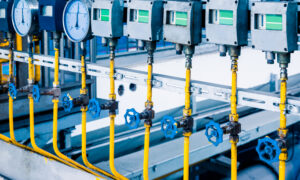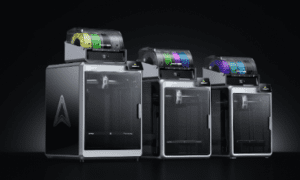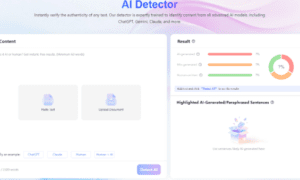Commercial and industrial energy storage systems store electricity for use in large facilities such as factories, hospitals, and office complexes. Their importance is increasing due to rising energy costs, growing pressure to reduce carbon emissions, and the desire to prevent costly disruptions caused by power outages. This article explains what these systems are, how they work, where they are used, and what to consider when selecting the right system.
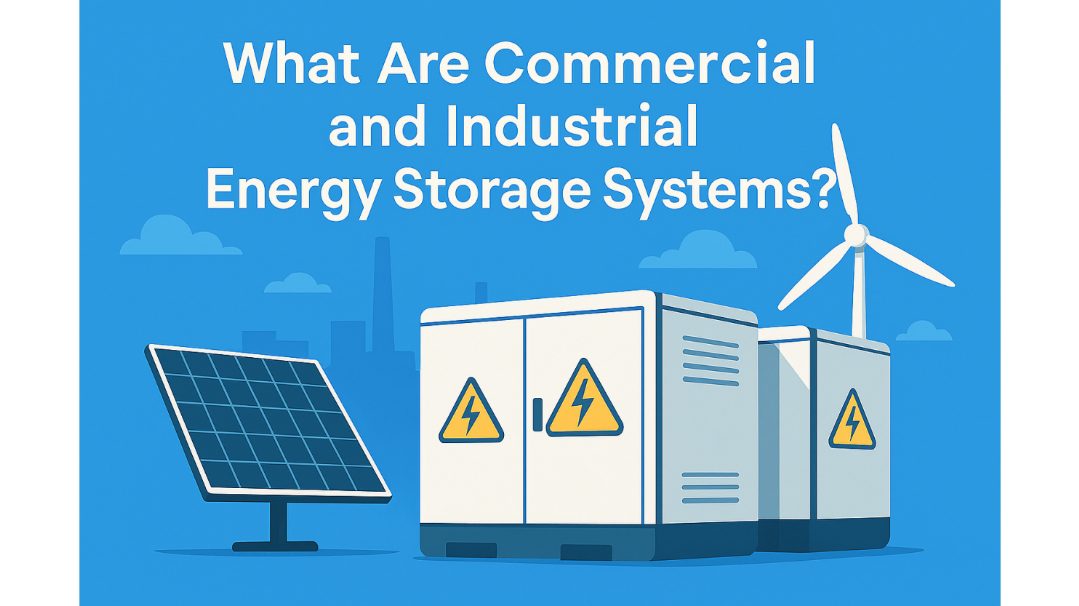
What Are Commercial and Industrial Energy Storage Systems?
1. Definition of C&I Energy Storage Systems
Commercial and industrial energy storage systems are on-site battery installations that store electricity for use in business or institutional facilities. They are designed to support large and often complex energy demands by managing how and when electricity is consumed. Their main functions include reducing electricity costs, supporting backup power, and improving the overall energy efficiency of the businesses.
2. How They Differ from Residential or Utility-Scale Storage
These systems differ significantly from residential storage, which typically supports limited household loads. Residential systems usually serve the energy needs of a single household while also providing it with energy backup during emergencies.
In contrast, commercial and industrial systems can handle larger energy volumes and are built to support daily operations across high-load equipment and multiple buildings. These systems differ from utility-scale storage systems as well, which are much larger, measured in megawatts (MW), and are designed for grid-level applications.
3. Typical System Sizes and Use Cases
Just like any other energy storage system, commercial and industrial energy storage systems also come in various sizes, usually ranging from several hundred kilowatt-hours to multiple megawatt-hours. These systems are mostly used to reduce peak demand charges, shift energy use to off-peak hours, support critical operations during outages, and store surplus renewable generation for later use.
4. Common Applications of C&I Energy Storage Systems
They are mostly used in factories, data centers, office parks, logistics hubs, hospitals, and other large facilities.
How Do C&I Energy Storage Systems Work?
1. Overview of Key Components
Commercial and industrial energy storage systems rely on different components to function well, and some key components are:
- Battery
The battery is the most important part of the whole setup that stores electrical energy. Many systems use lithium-ion or lithium-iron phosphate chemistries due to their efficiency, safety, and long service life.
- Battery Management System (BMS)
The battery management system continuously monitors the battery’s internal conditions. It ensures safe operation by tracking and managing parameters such as temperature, voltage, and charge levels. By preventing issues like overcharging and short circuits, the BMS helps protect electrical equipment and extend the battery’s service life.
- Power Conversion System (PCS)
The power conversion system is another important component of the whole system, connecting the battery to the facility’s electrical infrastructure. It converts direct current to alternating current for equipment use and alternating current to direct current for battery charging.
- Energy Management System (EMS)
The energy management system controls when to charge or discharge the battery based on factors like usage patterns, electricity prices, or backup requirements. It also enables coordination with solar panels, generators, or utility programs.
2. On-Grid vs. Off-Grid or Hybrid Applications
Generally, commercial and industrial energy storage systems operate in three main configurations. On-grid systems remain connected to the utility and are used to manage demand charges and optimize energy costs. Off-grid systems supply power independently without relying on the local utility grid. Hybrid systems combine both capabilities to switch between grid support and full energy independence according to your needs.
Key Benefits of Energy Storage for Commercial and Industrial Users
Commercial and industrial energy storage systems come with many benefits that make them an attractive investment for businesses. The most significant benefit is cost savings through peak shaving and demand charge reduction. Discharging stored electricity during peak hours helps you avoid high utility charges linked to peak usage.
These systems also provide backup power during grid outages for critical business operations. Facilities with on-site renewable energy installations can also increase energy independence by storing excess energy for later use. This reduces reliance on the grid and maximizes the value of installed solar or wind systems.
What to Consider When Choosing a C&I Energy Storage System?
Given these significant benefits, how can you choose the C&I energy storage system that best suits your needs? Here is a step-by-step guide to choosing the right commercial energy storage solutions:
1. Load Profile and Energy Needs
The first step is to analyze your facility’s load profile and overall energy needs. Daily consumption patterns, peak demand levels, and operational schedules determine the required system size and configuration.
2. Available Space and Installation Constraints
Assess the available space and site conditions. Commercial and industrial energy storage systems need adequate room for installation, ventilation, and maintenance. Indoor and outdoor setups have different requirements that must align with local regulations.
3. Reliability and Safety Certifications
You need to select a system that has proven reliability and comes with the necessary certifications. Always verify that the system complies with recognized standards for performance, fire safety, and electrical protection.
4. Supplier’s Experience and After-Sales Service
The supplier’s experience and level of after-sales support should also be evaluated carefully. Choose a provider with a proven track record, particularly in your industry or region.
5. Scalability and Future-Proofing
Lastly, consider the scalability and long-term adaptability of your desired system. A good storage system should allow for capacity expansion or integration with future energy technologies without requiring a complete replacement.
C&I Energy Storage System Brand Recommendation
With these key considerations in mind, partnering with an experienced and reputable supplier becomes crucial. Among many options, Sunway distinguishes itself with reliable, scalable energy storage solutions suited for commercial and industrial environments. Here are two of their flagship systems:
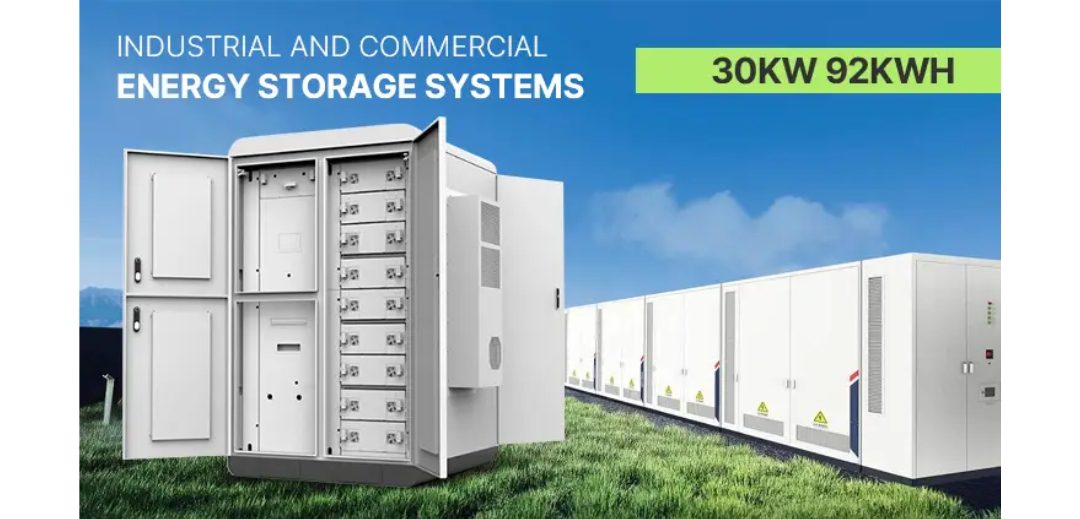
Their 768V 92kWh system features a modular lithium iron phosphate battery pack with a max charging power of 100 kW and discharging power of 90 kW. It supports outdoor installation, real-time monitoring, and high safety standards, making it ideal for applications like peak shaving, backup power, and energy efficiency improvements.
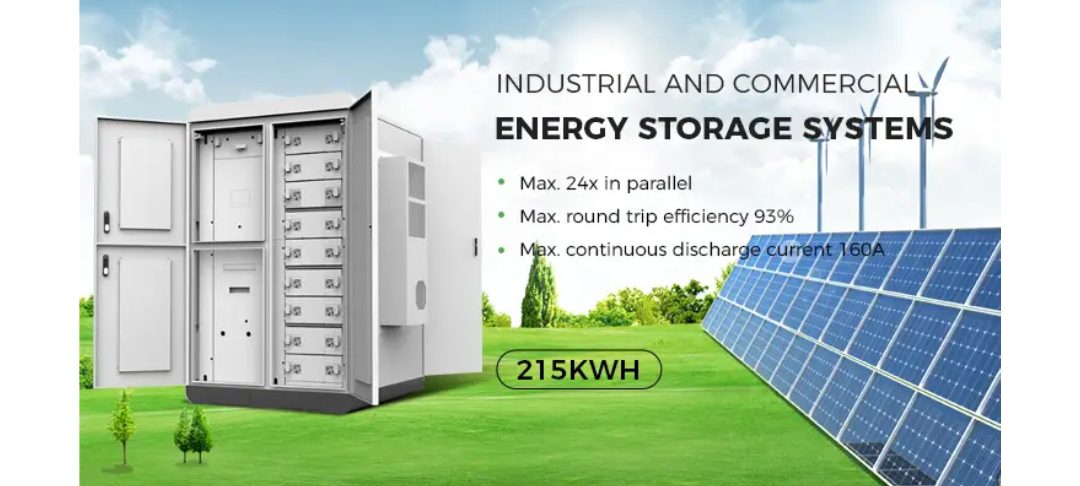
Furthermore, the 768V 215kWh system expands capacity and power for larger demands, maintaining advanced battery management and thermal control. It delivers consistent performance with a durable design suited for harsh environments, supporting reliable energy storage at scale for industrial and commercial operations seeking to enhance energy security and operational efficiency.
Both systems prioritize scalability, safety, and adaptability for modern power needs.
Wrapping Up
Investing in commercial and industrial energy storage can significantly improve energy management and resilience for your facility. By selecting a reliable, scalable, and certified system like those from Sunway, you can optimize costs and ensure continuous operations.
If you need backup power, peak shaving, or renewable integration, you may connect with Sunway today. Their rich expertise and industry-leading technology can help optimize your energy storage strategy!





